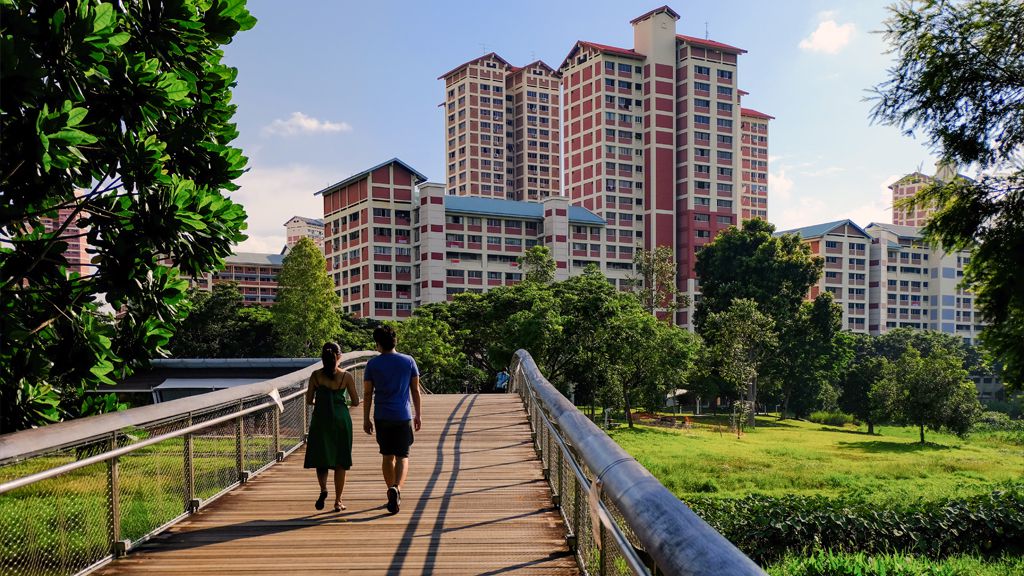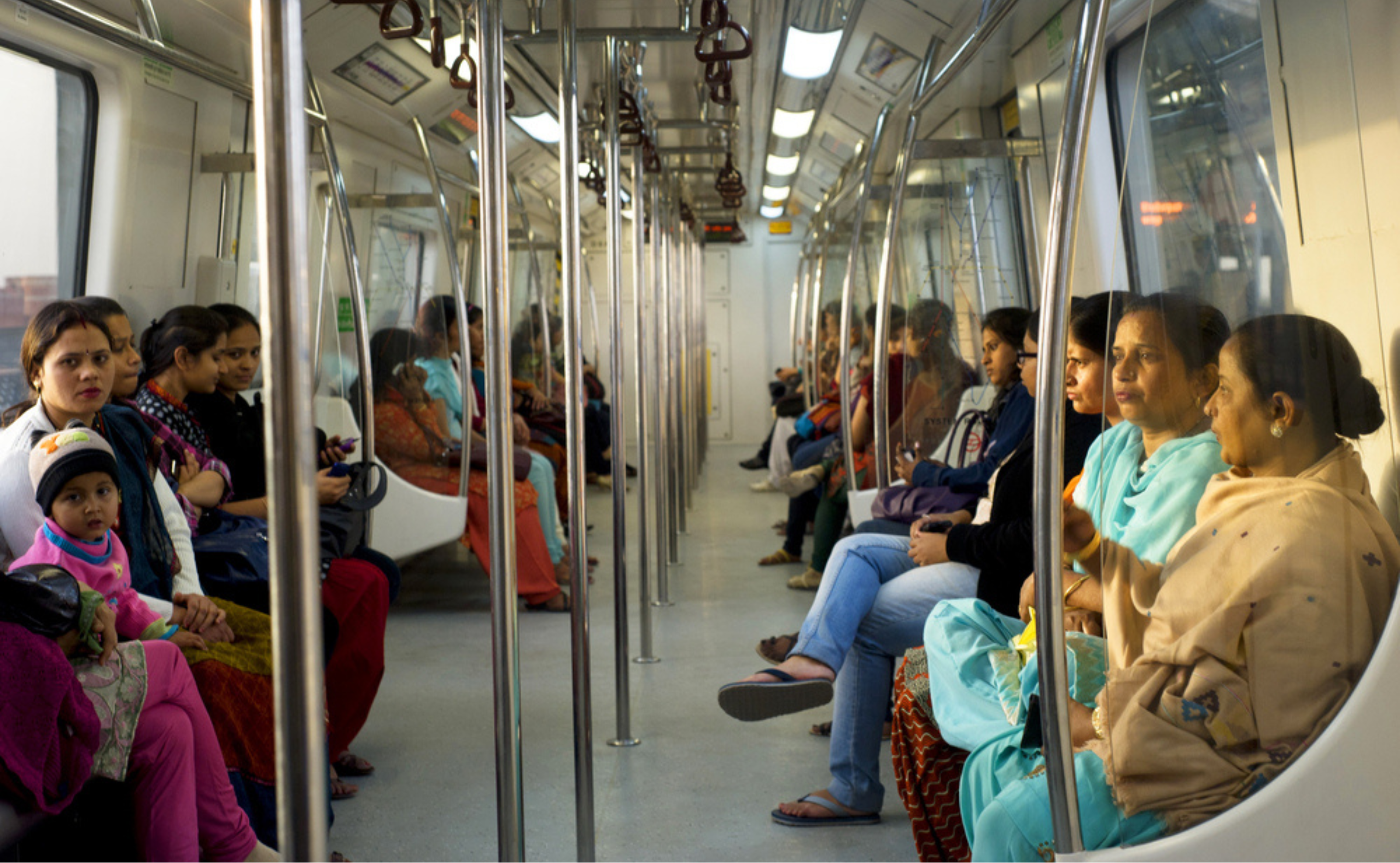
The coronavirus disease (COVID-19) pandemic discriminates in effect against the poor and the vulnerable, who have weaker immune systems and lack access to treatment and social support due to their economic status. The virus and social-isolation measures have caused a large increase in unemployment for lower-income segments of the population and depressed demand in industries with lower-income workers. It has been estimated that an additional 88 million–115 million people were plunged into extreme poverty in Asia in 2020, a figure that may rise to 150 million by the end of 2021 (Dartanto 2021: 7). Amid social isolation measures, homeownership has become increasingly central but has remained severely unaffordable for median-income workers. These inequalities have been exacerbated by unequal IT literacy rates and access to quality devices and ICT infrastructure upon which access to social services is becoming increasingly dependent.
Better social services are needed to fight inequality
With social services under strain and in greater demand than ever, it is imperative that governments in Asia pursue strategies that increase and improve the delivery of social infrastructure services. Social services are the main output of social infrastructure, and their provision depends upon physical infrastructure, such as hospital buildings, public housing, roads, and telecommunication facilities. Social infrastructure investment has been identified as an infrastructure priority for Asia. Prior to the pandemic, estimated investment of $1.6 trillion–$1.7 trillion per year was needed (Asian Development Bank 2017), and the pandemic has increased this demand by 0.5%–1% of gross domestic product (GDP) (Dartanto 2021: 19). The provision of these services is important for the resilient, inclusive development of Asia.
Social infrastructure for health, education, and housing
The pandemic poses serious risks to the capacity of health systems to support themselves. There is widespread health service undercapacity, with low and middle-income countries in Asia and the Pacific already facing a shortage in hospital capacity with only 2.5 beds per 1,000 population (compared to the Organisation for Economic Co-operation and Development average of 4.6) (Dartanto 2021: 10). This undercapacity poses long-term risks beyond the pandemic. There is a risk of the crowding out of essential health services, such as services for immunization and reproductive and child health.
Educational attainment is crucial for achieving sustained economic growth, however the pandemic risks tipping Asia’s “learning crisis” into “catastrophe.” By April 2020, the pandemic had led to the closure of schools across 172 countries, affecting more than 1.4 billion students, or 84.8% of total enrolled learners (Dartanto 2021: 9). This has resulted in reduced learning outcomes, increased school dropouts, and an increased reliance on distance learning, all which disadvantage those lacking access to digital ICT infrastructure.
During the pandemic and social isolation measures, access to quality and affordable housing has become incredibly important for employment, health, and education. However, as the Asian Development Outlook 2019 Update found, in over 90% of the 210 cities in 27 Asian countries, housing is severely unaffordable for median households (Hasan 2021: 21). This has led to reduced labor flexibility and fewer productivity gains that would be typically associated with urbanization.
To discuss these challenges and highlight the importance of this agenda for the Asian Development Bank’s developing member countries, the Asian Development Bank Institute (ADBI) recently hosted a virtual policy dialogue, “Infrastructure, Technology, and Finance for Sustainable and Inclusive Development in Asia”. Experts, business leaders, and policy makers discussed the state of social infrastructure in Asia, the multidimensional challenges posed by the COVID-19 pandemic, and potential policy and technological solutions. The following are some key takeaways, constraints, and policy solutions identified during the dialogue.
Key takeaways
One of the most overarching challenges of the pandemic has been public finance management. The pandemic and associated social restriction policies have lowered economic growth and the ability of Asian governments to finance social infrastructure. The International Monetary Fund (2021) projects that Asia’s real GDP growth in 2020 dropped by 2.3 percentage points from 2019. In Indonesia, the government is currently facing an increased fiscal deficit of approximately 6.09% of GDP in FY2020 and will likely incur a debt-to-GDP ratio of around 40% (Mulyani 2021). These resource constraints create trade-offs for social infrastructure spending and demand difficult decision-making, technological innovation, and broadened sources of financing. Therefore, a greater quantity and diversity of financing is needed to improve the quality and inclusiveness of social infrastructure.
Regulatory reform to attract greater private-sector investment is critical to improving social infrastructure provision. In Indonesia, the public–private partnership model has been successful in addressing the lack of telecommunication and information infrastructure development in the country. The Palapa Ring Project has expanded the country’s optical fiber network and broadened access to Internet and TV broadcasts across three regions in the country. Additionally, the Multifunctional Satellite Project (2022) will improve access to telecommunications for education and health and government services throughout the country (Syahruzad 2021: 10).
With limited resources, investment in social infrastructure must be well-considered and part of a long-term strategy. In the context of increasing financial constraints (from the pandemic), policy makers must make careful decisions on how to invest public funds. Policy makers must not simply consider the quantity of investment but also the quality. Publicly provided social protection services, such as paid sick leave (PSL) can be very effective in containing the infection rates of not just COVID-19 but all manner of influenza-like illnesses. The absence of a PSL system means workers will be more inclined to go to work even when they are sick so as to not lose income, and this places their colleagues at a higher risk of infection. PSL addresses this externality problem by incentivizing employees to stay home when they are potentially infectious, removing disincentives for at-risk workers to get tested and incentivizing the provision of accurate data to contact tracers (Hasan 2021: 17). Significant reductions in the transmission of influenza-like illnesses have been shown by empirical studies, such as Pichler, Wen, and Ziebarth (2020) and Pichler and Ziebarth (2017). Meanwhile, global empirical analysis of COVID-19 control measures by the Asian Development Bank found that contact tracing is only effective when used together with PSL.
The fostering of digital innovation must be balanced by robust policy and regulatory frameworks to safely and equitably transition to a greater digital provision of social services. A rapid digitalization shift poses risks for those with low digital literacy to fall victim to scams and other crimes. Policy makers must not forget the importance of digital education as they increase service provision. In addition, although digital services such as fintech may provide promising solutions, risks regarding data protection and privacy should be taken into account when formulating the right policy framework.
Well-considered policy and institutional design is more critical than ever in the COVID-19 pandemic crisis. The health and financial crisis demands an urgent response but poses many seen and unforeseen future challenges that require time and planning to prepare for. Data from Our World in Data (2021) shows that the average speed of vaccine distribution is 0.17% of the population in a month, and Dartanto (2021: 15) argues that COVID-19 could persist until 2030. Governments in Asia must balance both these immediate and future demands while managing their deepening financial constraints. Good policy design is needed.
The housing affordability crisis is a clear example of the necessity of long-term, well-considered government intervention. Policy makers must take steps to reduce house prices and increase the ability of households to pay. Long-term urban planning based on increasing housing supply and expanding the reach of social services and transportation should be pursued in partnership with the private sector. Targeted cash benefits for low-income households in conjunction with reduced housing finance payments will increase the equitability of access to affordable housing.
Good policy design and decision-making require good data, however. Therefore, the first step that governments should take is to improve their data collection, safety, and analysis. Most information systems are geared toward collecting information from the public sector, but more efforts should be made in gathering data from private educational or health services. Public policy officials must continue to address the lack of data and the lack of systems for sharing data. Sharing countries’ experiences of handling data gathering will be beneficial for developing countries. For example, Cho (2021: 15) mentions that the Epidemiological Investigation Support System in the Republic of Korea could share its experiences with developing countries on how the data collection system borne of the “smart city” concept has allowed for quick decision-making and avoided a reliance on lockdown measures for controlling the rate of infection in the country.
As such, policy interventions must be increasingly targeted to address the widening income gap caused by the pandemic. This income gap will likely be amplified by the bias in recovery by sector. Therefore, different sectors will need different interventions, and more customized policymaking will be needed.
_____
References:
Asian Development Bank (ADB). 2017. Meeting Asia’s Infrastructure Needs. Manila: ADB.
Cho, D. 2021. Technology in Korea Smart City. Conference presentation, 18–19 February. Indonesia-Japan Policy Research Forum for Asia: Infrastructure, Technology and Finance for Sustainable and Inclusive Development in Asia beyond the Pandemic, Online.
Dartanto, T. 2021. Impact of COVID-19 on Social Infrastructure in Asia. Conference presentation, 18–19 February. Indonesia-Japan Policy Research Forum for Asia: Infrastructure, Technology and Finance for Sustainable and Inclusive Development in Asia beyond the Pandemic, Online.
Hasan, R. 2021. Social Infrastructure in Asia: Selected Issues. Conference presentation, 18–19 February. Indonesia-Japan Policy Research Forum for Asia: Infrastructure, Technology and Finance for Sustainable and Inclusive Development in Asia beyond the Pandemic, Online.
International Monetary Fund. 2021. World Economic Outlook Update: January 2021. Washington, DC: IMF.
Mulyani, S. 2021. Keynote Address. Conference presentation, 18–19 February. Indonesia-Japan Policy Research Forum for Asia: Infrastructure, Technology and Finance for Sustainable and Inclusive Development in Asia beyond the Pandemic, Online.
Syahruzad, E. 2021. The Role of Technology for Public Infrastructure Development. Conference presentation, 18–19 February. Indonesia-Japan Policy Research Forum for Asia: Infrastructure, Technology and Finance for Sustainable and Inclusive Development in Asia beyond the Pandemic, Online.
Pichler, S., and N. Ziebarth. 2017. The Pros and Cons of Sick Pay Schemes: Testing for Contagious Presenteeism and Noncontagious Absenteeism Behavior. Journal of Public Economics, 156: 14–33. Doi:10.1016/j.jpubeco.2017.07.003
Pichler, S., K. Wen, and N.R. Ziebarth. 2020. Positive Health Externalities of Mandating Paid Sick Leave. IZA Discussion Paper 13530.
Samutachak, B. 2021. The Role of Technology and Financing for Quality Infrastructure Services: COVID-19, Thailand, and the Platform. Conference presentation, 18–19 February. Indonesia-Japan Policy Research Forum for Asia: Infrastructure, Technology and Finance for Sustainable and Inclusive Development in Asia beyond the Pandemic, Online.
Our World in Data. Statistics and Research: Coronavirus (COVID-19) Vaccinations, 2021 (accessed 10 June 2021).






